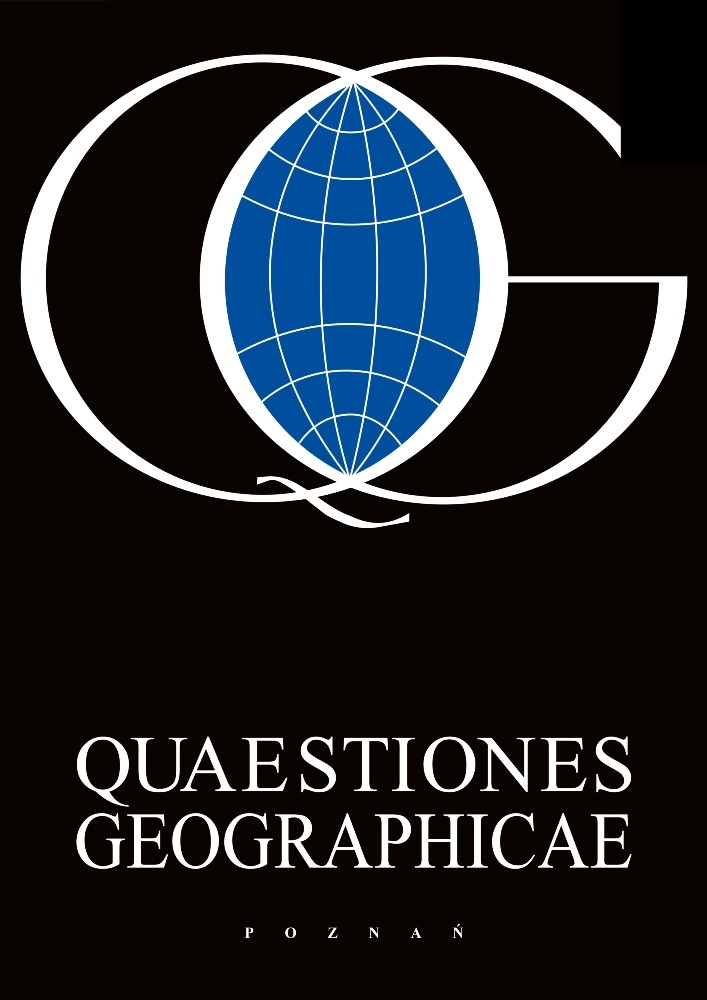Abstract
The main source of information about future climate changes are the results of numerical simulations performed in scientific institutions around the world. Present projections from global circulation models (GCMs) are too coarse and are only usefulness for the world, hemisphere or continent spatial analysis. The low horizontal resolution of global models (100–200 km), does not allow to assess climate changes at regional or local scales. Therefore it is necessary to lead studies concerning how to detail the GCMs information. The problem of information transfer from the GCMs to higher spatial scale solve: dynamical and statistical downscaling. The dynamical downscaling method based on “nesting” global information in a regional models (RCMs), which solve the equations of motion and the thermodynamic laws in a small spatial scale (10–50 km). However, the statistical downscaling models (SDMs) identify the relationship between large-scale variable (predictor) and small-scale variable (predictand) implementing linear regression. The main goal of the study was to compare the global model scenarios of thermal condition in Poland in XXI century with the more accurate statistical and dynamical regional models outcomes. Generally studies confirmed usefulness of statistical downscaling to detail information from GCMs. Basic results present that regional models captured local aspects of thermal conditions variability especially in coastal zone.
References
Barnett T.P., Preisendorfer R., 1987. Origins and levels of monthly and seasonal forecast skill for United States surface air temperature determined by canonical correlation analysis. Mon. Wea. Rev. 115: 1825–1850.
Brzóska B., Jaczewski A., 2011. Nearby twenty years in the light of the results of the regional modeling based on selected thermal indicators. Acta Geographica Silesiana 1. WNoZ UŚ-ZPKWŚ, Sosnowiec-Będzin: 17–21 (in Polish).
Burkhardt U., Becker E., 2006. A Consistent Diffusion-Dissipation in the ECHAM Climate Model. Monthly Weather Review 134, 4: 1194–1204.
Hotelling H., 1936. Relations between two sets of variants. Biometrika 28: 321–377.
IPCC, 2007. Climate Change 2007: Synthesis Report. Contribution of Working Groups I, II and III to the Fourth Assessment Report of the Intergovernmental Panel on Climate Change. IPCC, Geneva, Switzerland.
Kalnay E., Kanamitsu M., Kistler R., Collins W., Deaven D., Gandin L., Iredell M., Saha S., White G., Woollen J., Zhu Y., Leetmaa A., Reynolds R., 1996. The NCEP/NCAR 40-year Reanalysis Project. Bulletin of the American Meteorological Society 77: 437–471.
Kemball-Cook S., Wang B., Xiouhua F., 2002. Simulation of the Intraseasonal Oscillation in the ECHAM-4 Model: The Impact of Coupling with an Ocean Model. Journal of the Atmospheric Sciences 59, 9: 1433–1453.
Macadam I., Pitman A.J., Whetton P.H., Abramowitz G., 2010. Ranking climate models by performance using actual values and anomalies: Implications for climate change impact assessments. Geophys. Res. Lett. 37, L16704. DOI: 10.1029/2010GL043877.
McMahon T.A., Peel M.C., Karoly D.J., 2015. Assessment of precipitation and temperature data from CMIP3 global climate models for hydrologic simulation. Hydrol. Earth Syst. Sci. 19: 361–377. DOI: 10.5194/hess-19-361-2015: 362–377.
Mearns L.O., Giorgi F., Whetton P., Pabon D., Hulme M., Lal M., 2003. Guidelines for Use of Climate Scenarios Developed from Regional Climate Model Experiments by DDC of IPCC TGCIA Final Version – 10/30/03.
Meijgaard E., Ulft L.H., Berg W.J., Bosveld F.C., Hurk B.J. J.M., Lenderink G., Siebesma A.P., 2008. The KNMI regional atmospheric climate model RACMO version 2.1. Technical report; TR-302.
Miętus M., 1999. The role of regional atmospheric circulation in creating climatic and oceanographic conditions along Polish coastal zone. Research Materials of IMGW, Series: Meteorology 29: 1–157 (in Polish).
Miętus M., Filipiak J., 2001. Structure of temporal-spatial variability of thermal conditions in the Gdansk Gulf region. Research Materials of IMGW, Series: Meteorology 32: 1–53 (in Polish).
Miętus M., Filipiak J., 2002. Impact of North Atlantic SST on large scale atmospheric circulation and thermal conditions in Poland in XXI century in the Euro-Atlantic region. Research Materials of IMGW, Series: Meteorology 35: 1–68 (in Polish).
Miętus M., Filipiak J., 2004. The temporal and spatial patterns of thermal conditions in the area of the southwestern coast of the Gulf of Gdańsk (Poland) from 1951 to 1998. Int. J. of Climatology 24, 4: 499–509.
Nakicenovic N., Alcamo J., Davis G., de Vries B., Fenhann J., Gaffin S., Gregory K., Grübler A., Jung T.Y., Kram T., La Rovere E.L., Michaelis L., Mori S., Morita T., Pepper W., Pitcher H., Price L., Riahi K., Roehrl A., Rogner H.H., Sankovski A., Schlesinger M., Shukla P., Smith S., Swart R., van Rooijen S., Victor N., Dadi Z., 2000. IPCC Special Report on Emissions Scenarios. Cambridge University Press, Cambridge, United Kingdom and New York, NY, USA.
Roeckner E., Brokopf R., Esch M., Giorgetta M., Hagemann S., Kornblueh L., Manzini E., Schlese U., Schulzweida U., 2006. Sensitivity of simulated climate to horizontal and vertical resolution in the ECHAM5 atmosphere model. J. Climate 19: 3771–3791.
von Storch H., 1995. Inconsistencies at the interface of climate impact studies and global climate research. Meteor. 4: 72–80.
von Storch H., 1999. On the use of “inflation” in downscaling. J. Climate 12: 3505–3506.
von Storch H., Zorita E., Cubasch U., 1993. Downscaling of Global Climate Change Estimates to Regional Scales: An Application to Iberian Rainfall in Wintertime. J. Climate 6: 1161–1171.
von Storch H., Zwiers F., 2001. Statistical Analysis in Climate Research. Cambridge Univ. Press.
Wilby R., Dawson C.W., 2007. SDSM 4.2 – A decision support tool for the assessment of regional climate change impacts. User Manual.
Wilby R.L., Charles SP., Zorita E., Timbal B., Whetton P., Mearns L.O., 2004. Guidelines for Use of Climate Scenarios Developed from Statistical Downscaling Methods. IPCC Task Group on Data and Scenario Support for Impact and Analysis (TGICA).
Wilks D.S., 2008. Statistical Methods in the Atmospheric Sciences. Second Edition. International Geophysics Series 91. Academic Press.
Wilks D.S., 2011. Statistical Methods in the Atmospheric Sciences. Vol. 100. Third Edition (International Geophysics).
Wilks D.S., Wilby R.L., 1999. The weather generation game: a review of stochastic weather models. Progress in Physical Geography 23: 329–357.
License
© 2015 Faculty of Geographical and Geological Sciences, Adam Mickiewicz University.
This work is licensed under the Creative Commons Attribution-NonCommercial-NoDerivatives 3.0 License.
